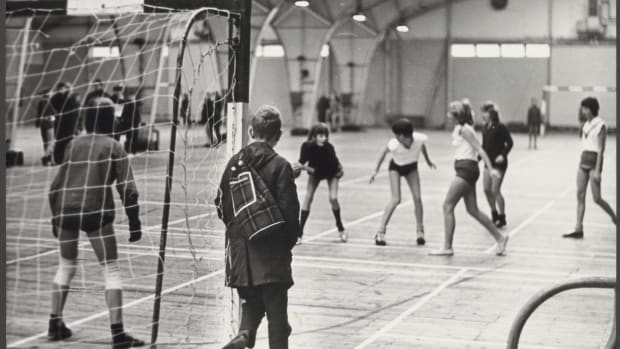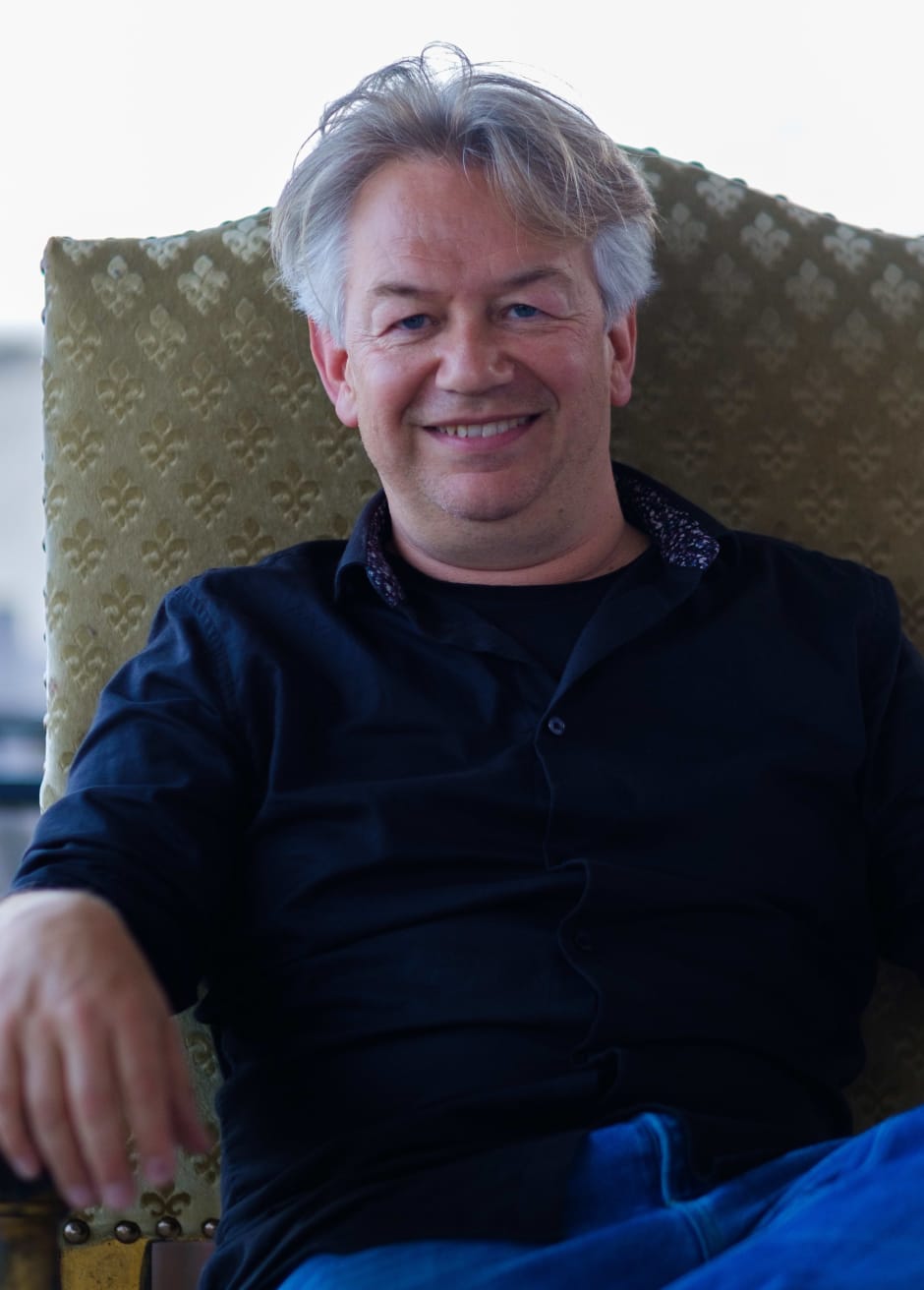
From gym classes in icy classrooms to 20,000 members: 80 years of sports history at the UvA
While now every UvA student almost mindlessly takes out a membership at the University Sports Center (USC), sports at the university just after World War II were mainly something for go-getters. In his book Meeting through Movement, sports historian Jurryt van de Vooren draws on 80 years of university sports to describe how the social position of the UvA changed.
You previously wrote a book about the history of the VU Sports Center, Een bijzondere beweging. What made you curious about the UvA?
“I was curious about the similarities and differences of the universities’ sports history. Differences existed mainly before the national government got involved in the 1950s. I wrote the book about VU as an outsider since I studied at the UvA and was a board member of the Asva in the 1990s, the student union that played an important role in the history of university sports at UvA.”
When did university sports originate at UvA?
“Only after the Second World War. Before that, only the student body organized sports for students, but that is something different from university sports because it is specifically about the universities providing the resources for sports.”
1945-1953: Universities, municipalities, and students start organizing university sports.
1953: In response to questions about the physical and mental health of students from a VVD MP; the national government also includes university sports in its remit.
1960: The Cals Memorandum establishes how much money will be allocated for university sports. In the following years, university sports facilities are built throughout the Netherlands.
1976: The UvA sports center on de Boelelaan opens its doors, 14 years after the initial plans were drawn up.
Around 1990, the artificial division between performance and non-performance sports disappears. Although - to this day - the UvA does not facilitate top sports.
2010: Opening of university sports center Universum, in Watergraafsmeer
“With World War II came the big turnaround. Then all university life came to a halt at the UvA, as many students did not want to sign the Declaration of Loyalty stating that they would not resist the Germans. Those students were no longer allowed to study or work. To avoid being deported to Germany for the mandatory Arbeitseinsatz (mandatory work detail), they went into hiding, and many joined the resistance. For the university, those students completely disappeared from view. Only after liberation did it become clear which students were still alive and in what state their health was. This sparked the realization at universities that they were partly responsible for the mental and physical well-being of their students.”
“At the same time, the Declaration of Loyalty was signed by another large group of students. These were commuters, students who lived outside Amsterdam and came daily by train, and also the nihilists. These groups were not members of the traditional student associations, often because they came from less wealthy families and therefore had little connection to university life. To prevent such a large group of students from being pressured to make another decision that went against the national interest, the idea came about for a general student organization without elections or high membership fees. That becomes the Asva, the General Student Union Amsterdam. The idea was for all students to meet there through sports.”
“That was all part of the new, national idea within universities: We must become a university community accessible to all. That includes the Folia Civitatis and part of that and Kriterion, the cinema run by students.”
Initially, the Asva wanted to include all the student body’s sports associations, such as rowing club Nereus. Where did that go wrong?
“In 1947, the Asva already realized that the task was too big. They barely existed and already couldn’t even govern themselves. Also, the corps sports associations were ultimately unwilling to transfer their governance to the Asva. A special physical education office was then set up at the university to organize it.”
What did university sports look like in the early days?
“University sport at that time was not a sport in the competitive sense of the word, but physical exercise that was supposed to elevate students ‘into a complete human being.’ Wanting to be a champion was considered pernicious in Calvinist Holland. That was personality glorification. A tribal statue for an athlete was sports glorification.”
“University sports at the UvA came down to two lecturers who started giving gymnastics lessons to a small group of students in stone-cold classrooms in the winter of 1946-1947. Only a group of about 50 male students in the police headquarters on Marnixplein was able to play sports that winter because there was heating and a shower there. So women’s sports were shut down right away that winter.”

In 1947, the UvA had zero sports venues. The book lists 33, scattered throughout the city. When was the heyday of university sports?
“Nationwide, the heyday was in the 1960s. Then new central buildings for sports popped up all over Dutch university campuses. Only the UvA lagged behind. The construction of the sports center at De Boelelaan was not completed until 1976. It was also very quiet there at first. Only in the 1990s with the introduction of BOMmen (Bewegen Op Muziek, the forerunner of fitness), the control of the membership administration, and especially the independence of the sports center did things go much better.”
What changed after the 1960s?
“The turnaround again came fairly quickly from the left, when the Den Uyl government in the 1970s did not want to favor students with university sports over youth who not studying at university.”
“The democratization of the Netherlands broke the position of the university elite and made the university broader and more popular. But now the government wants to withdraw funding again, so as not to shortchange workers. Universities, including the UvA, have now decided to finance sports on their own.”
Did you experience anything regarding university sports when you were a board member at the Asva in the 1990s?
“I don’t recall us ever talking about it, even though at that time there were large, successful demonstrations from university sports participants against the plan of Wim Deetman, the Minister of Education at the time, who wanted to abolish all university sports. In retrospect, I think we as Asva board totally overlooked university sports. The association was far too busy campaigning on political issues to realize that non-political issues matter, too.”
Where do college sports stand now?
“I think we are experiencing a boom again, thanks to corona, which brought much more attention to the mental and physical well-being of students. During corona, students were able to continue to meet and keep moving primarily through USC’s online workouts. Then, all at once, it was decided that the sports subscription for students should be free for the first three months, something that the Universum sports complex had wanted for a long time.”
“During corona, it also became clear that university sports is not only about movement, but also about getting together, which puts you in a larger environment as a student. That is also very important for international students.”
Can other universities now turn to you for a sports history story?
“This will be my last book on university sports for now. What I want to focus on for the next four years is 2028. Then it will be 100 years since the Olympic Games were held in Amsterdam. Instead of just looking back at historical moments, we should use that moment to put the social position of sports in the Netherlands on the map, together with educational institutions, heritage collections, and independent research.”
Jurryt van de Vooren, Ontmoeting door beweging, Tachtig jaar sport en lichamelijke opvoeding op de Universiteit van Amsterdam. Scheduled for release on June 28th, Amsterdam University Press. €24,99

